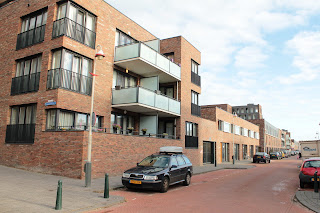
The Kungbronhusen Office Building is a 13-storey property in the centre of Stockholm, near the Stockholm Central Station.

Both the Central Station and the Office Building are owned by Jernhusen company.

Jerhunsen wanted to prove that it is possible to built a sustainable office building using available of the market materials and mature technologies rather than fancy but risky innovations.
The objective of the project is to create a development where the environment and energy-efficiency are central considerations.
Building’s branding is about being ‘green’: the office space is let to the companies that want to boost their image as environmentally-friendly. All the tenants in the building are supported the expert who helps to adapt the organizations and minimize their impact on the environment. The building is advertised as being ‘eco-smart’, which includes three characteristics:
- Eco-smart building: The building with energy efficient façade and environmentally adapted materials, combined with other innovative solutions that lead to three environmental certifications.
- Eco-everyday: Services and technical solutions that enable users to operate in an eco-friendly way.
- Eco-location; The building’s proximity to public transport makes travelling and transports easier and contributes to lower CO2 emissions.

The users of the building are encouraged to minimize the environmental impact of their daily activities. Building users are offered coordinated framework agreements for cleaning services, servicing of office machinery and waste management. The building is also provided with secure bicycle storage area with a compressor pump and tools available for bicycle repairs, as well as dressing rooms and showers.
Another intersting part of the building is a ‘green button’: This button is pressed at the end of the working day to ensure that all standby functions such as computers, screens and other lighting are switched off.
An important part of the project is the building’s energy-efficient frontage, which controls the amount of sunlight allowed into the internal space and creates a balance so that the interior is neither too hot nor too cold.

One of the interesting features of the building is that every hour the Swedish meteorological centre automatically sends a detailed weather forecast direct to Kungsbrohuset via the GSM network. This means that the heat supply to Kungsbrohuset will be increased several hours before a drop in temperature occurs. By doing this, building’s heat regulating system is put to optimal use.
The largest part of the heating is provided by GSHP, with some part of the heating provided by body heat! Approximately 200,000 people pass through nearby Stockholm Central Station every day. These people, along with the various restaurants and cafés in the station, produce a large amount of excess heat. Instead of letting this heat goes to waste, it now being used for heating. Kungsbrohuset building. The technology is not new and is similar to the principles of Canadian wells. The heat generated by human activity is recovered by the ventilation system and then sent away from the station in its water tanks. Heated by this hot air, the water is sent to the second building through a heat exchanger, which allows the building to save up to 20% of its energy consumption. To complete the loop, the cooled water is returned to the station to optimize its temperature control.
Jerhusen is planning to build some more office buldings around the train station in the nearset future and they also have similar projects in other cities in Sweden.

Does this mean that this kind of projects are easy to replicate and can be widely used in the UK? We will talk about it in our workshop in early February – and if you are intersted, contac tme on k.chmutina@lboro.ac.uk .










